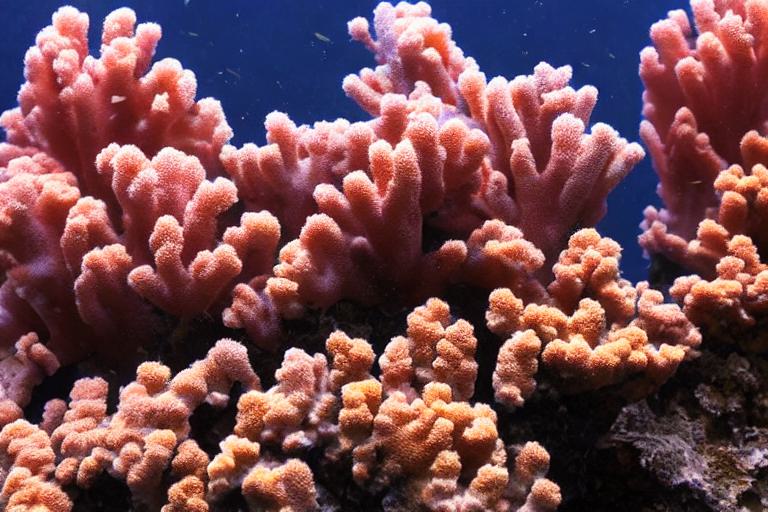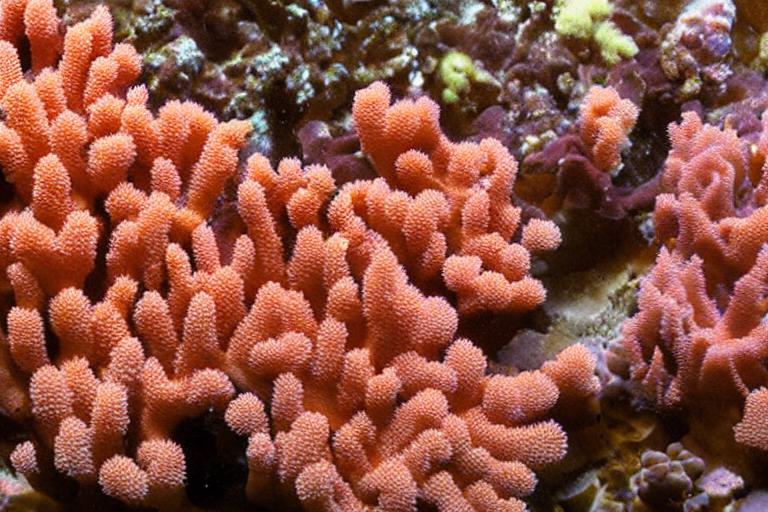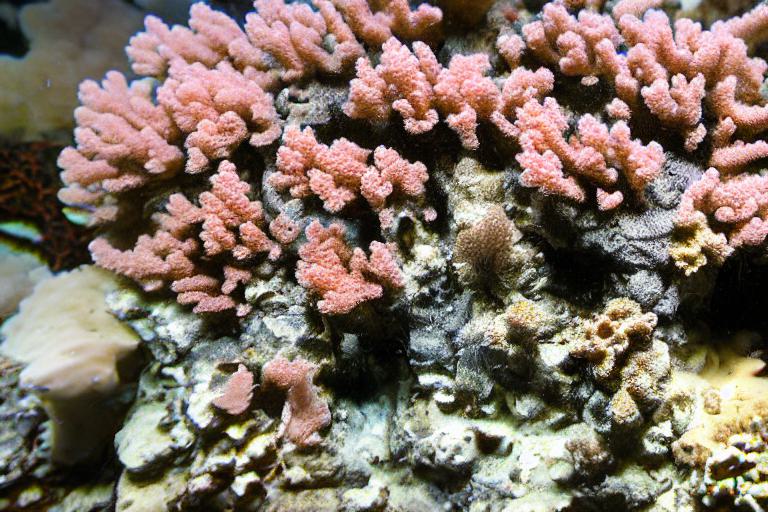Coral reefs are some of the most beautiful and diverse ecosystems on Earth. They are also very delicate, and require special care to thrive. Colt coral is a type of coral that is relatively easy to care for, making it a good choice for beginner reef aquarium hobbyists. In this article, we will provide an in-depth guide to caring for colt coral. We will cover topics such as tank setup, water quality, feeding, and more. By the end of this article, you should have a good understanding of how to care for this beautiful coral.
Basic Information
Colt coral, also known as finger coral, is a type of soft coral that is native to the Indo-Pacific region. It is a popular choice for saltwater aquariums because of its beautiful colors and relatively easy care.
It prefers to live in areas with moderate lighting and water flow. In the wild, it is often found in shallow reefs. Colt coral can be found in a variety of colors, including green, pink, orange, and red.
It is important to provide adequate lighting and water flow in the aquarium, as well as to regularly remove debris from the coral. Colt coral is a relatively easy coral to care for, making it a good choice for beginner saltwater aquarium hobbyists.
Natural Habitat and Appearance
It is a member of the family Alcyoniidae and is closely related to the more well-known leather coral. Colt coral can be found in a variety of colors, including brown, green, yellow, and orange. It is a relatively small coral, with a maximum diameter of about 2 inches. Colt coral is a type of soft coral that is native to the Indo-Pacific region.
It requires moderate lighting and water flow, and does best in a well-established reef aquarium. Colt coral is a relatively easy coral to care for, making it a good choice for beginner reef aquarists. It is important to provide enough space for the coral to grow, and to avoid placing it too close to other corals or rocks. Colt coral will grow and spread rapidly, and can eventually cover a large area of the aquarium.
Colt coral is a beautiful and easy-to-care-for coral that makes a great addition to any reef aquarium.

Placement in a Reef Tank
When it comes to placing your colt coral in your reef tank, there are a few things to keep in mind. Secondly, make sure that the water flow in the tank is not too strong. The coral will need time to adjust to the new environment and too much water flow can stress it out. The coral will need this to help it grow. First, make sure that there is plenty of space between the coral and other objects in the tank. Lastly, try to place the coral in an area where there is plenty of light. This will give the coral plenty of room to grow.
Water Quality
They are also some of the most fragile. Coral reefs are some of the most beautiful and biodiverse ecosystems on Earth. Water quality is a major factor in the health of a coral reef.
Even small changes can have a big impact on the health of the reef. Water quality is a major factor in the health of a coral reef. Coral reefs are very sensitive to changes in water quality.
Coral reefs are threatened by a number of water quality issues, including pollution, sedimentation, and climate change. These threats can have a big impact on the health of the reef.
We need to do everything we can to protect these fragile ecosystems. Water quality is a major factor in the health of a coral reef.
Calcium
It is used by corals to build their skeletal structures and helps to maintain the health of their tissue. Without adequate calcium, corals will not be able to grow and will eventually die. Calcium is one of the most important minerals for the growth and health of corals.
Additionally, if there is too much organic matter in the water, it can bind with calcium and make it unavailable to the corals. Another is if the water is too acidic, as this can cause calcium to be leached from the coral skeleton. One is simply not enough calcium in the water to begin with. There are a few things that can cause calcium levels to drop in a coral reef aquarium.
Additionally, regular water changes and the use of a protein skimmer can help to remove organic matter from the water and help to keep calcium levels high. To maintain proper calcium levels, it is important to use a high-quality salt mix that contains adequate calcium.
Alkalinity
Alkalinity is a measure of the amount of carbonate and bicarbonate in the water, and it is important for several reasons. Finally, alkalinity is important for the health of many other marine creatures, including fish, invertebrates, and algae. Alkalinity is one of the most important water parameters for a reef aquarium. Without adequate alkalinity, corals will not be able to grow and build their skeletons. First, carbonate and bicarbonate are the primary building blocks of coral skeletons. Second, alkalinity helps to buffer the water, keeping pH stable.
To do this, you will need to take a sample of your aquarium water and measure the pH. The most common method is to use a test kit, which will measure the amount of carbonate and bicarbonate in the water. There are a few different ways to measure alkalinity. Another method is to use a pH meter. The alkalinity is then calculated based on the pH.
If the alkalinity is too high, it can be lowered by doing a water change or by using an RO/DI unit to remove some of the carbonate and bicarbonate from the water. The ideal alkalinity for a reef aquarium is between 8 and 12 dKH. If the alkalinity is too low, it can be increased by adding a calcium reactor or by using a two-part calcium and alkalinity supplement.
pH (power of hydrogen)
pH is a measure of the acidity or basicity of a solution. It is measured on a scale from 0 to 14, with 7 being neutral. A solution with a pH less than 7 is considered acidic, while a solution with a pH greater than 7 is considered basic.
The pH of a solution can be affected by many factors, including the type of solution, the temperature, and the presence of other chemicals. For example, the pH of seawater is typically around 8.3, but it can vary depending on the location and time of year.
However, corals can adapt to a wide range of pH values, from 7.5 to 9.0. The ideal pH for coral growth is between 8.0 and 8.5. pH is an important factor in the care of corals, as they are sensitive to changes in pH.
sudden changes in pH can be stressful for corals and can lead to bleaching. In general, it is best to maintain a stable pH in a coral aquarium. If you need to make a change to the pH of your aquarium, do so slowly and over the course of several days.
Temperature and Flow
Temperature and Flow
Additionally, Colt Coral requires moderate water flow in order to help circulate nutrients and remove waste products. Water temperature should be between 72-78 degrees Fahrenheit, with a specific gravity of 1.023-1.025. As with all corals, Colt Coral requires specific water parameters for optimal health and growth.
Lighting
Without the proper lighting, your coral will not be able to photosynthesize and will eventually die. Lighting is one of the most important factors in keeping your Colt Coral healthy.
There are a few things to keep in mind when choosing lighting for your Colt Coral. Colt Corals need a minimum of 10,000 lux of light to thrive. Second, you need to make sure that the light is not too strong. If the light is too strong, it can bleached the coral. First, you need to make sure that the light is strong enough.
Third, you need to make sure that the light is the proper spectrum. Colt Corals need a light with a lot of blue light. This can be provided by either metal halide bulbs or LED bulbs.
The light should be diffused so that it does not cause any shadowing. Fourth, you need to make sure that the light is not too direct.
Finally, you need to make sure that the light cycle is correct. Colt Corals need a 12 hour light cycle with a light intensity of 10,000 lux for 8 hours and a light intensity of 5,000 lux for 4 hours.
If you follow these guidelines, you will provide your Colt Coral with the proper lighting it needs to thrive.

Colt Coral Threats (Based on the Frequency of Complaints)
Colt coral is a beautiful and popular type of coral that is often used in saltwater aquariums. However, colt coral can be difficult to care for and is often threatened by a number of different problems.
This can lead to the coral starving and eventually dying. One of the most common problems that colt coral faces is a lack of food. However, in captivity, colt coral often does not have access to enough food. In the wild, colt coral feeds on a variety of small organisms that it filters out of the water.
This causes the coral to turn white and can eventually kill the coral. Bleaching occurs when the coral is stressed and expels the symbiotic algae that live inside its tissue. Another common problem that colt coral faces is bleaching.
Finally, colt coral is also threatened by a number of diseases. Diseases can cause the coral to lose its color, become covered in mucus, and eventually die. These diseases can be caused by a variety of factors, including poor water quality, a lack of food, and bleaching.
By understanding the problems that colt coral faces, you can be better prepared to care for it and keep it healthy. If you are considering keeping colt coral in your aquarium, it is important to be aware of these threats.
Bleaching & Opening
Coral bleaching and opening are two of the most common problems that can occur with colt coral. Opening occurs when the coral’s mouth and tentacles are not able to close properly. This can be caused by a number of factors, including changes in water temperature, light, or chemistry. Bleaching occurs when the coral loses its color, usually due to stress. This can be caused by a number of factors, including water quality, nutrition, or disease.
Coral bleaching and opening are two of the most common problems that can occur with colt coral. Opening occurs when the coral’s mouth and tentacles are not able to close properly. This can be caused by a number of factors, including changes in water temperature, light, or chemistry. Bleaching occurs when the coral loses its color, usually due to stress. This can be caused by a number of factors, including water quality, nutrition, or disease.
If the coral is not getting enough food, it will start to bleach. If the coral is not getting enough light, it will start to lose its color. If the water temperature is too high or too low, the coral will also start to bleach. Changes in water chemistry can also cause bleaching. Coral bleaching is often the first sign that something is wrong with the coral.
Coral opening is often a sign that the coral is not healthy. If the water quality is poor, the coral will also start to open. If the coral is sick, it will also start to open. If the coral is not getting enough food, it will start to open its mouth and tentacles.

Infections
Coral infections are a leading cause of coral reef decline. Infections can be caused by a variety of pathogens, including bacteria, fungi, and viruses. Infections can lead to coral bleaching, tissue death, and colony collapse.
Infections can spread quickly through a reef system and can be difficult to control. This is due to the close proximity of corals and the high levels of water flow on reefs. Coral reef ecosystems are highly susceptible to infections.
Coral reef managers are working to improve the resilience of reefs to infections. This includes reducing water pollution, increasing water circulation, and managing fishing and tourism activities.
Compatibility with Other Species
Coral reefs are some of the most diverse ecosystems on Earth. They are home to thousands of species of fish, invertebrates, and plants.
Coral reefs are also home to many species of algae. They provide food and oxygen for the corals and other animals. Algae are an important part of the coral reef ecosystem.
Some species of algae can be harmful to coral reefs. These species can overgrow corals and smother them. Other algae can release toxins that can kill corals.
Coral reefs are under threat from many sources, including pollution, overfishing, and climate change. These threats can damage or kill corals.
They can cause harm to the native species. Invasive species are animals or plants that are not native to an ecosystem. Coral reefs are also threatened by invasive species.
You can also join an organization that is working to protect coral reefs. There are many ways to help protect coral reefs. You can learn about coral reefs and how to protect them.
Fragging Colt Coral
This coral is easy to care for and is very resilient. Colt coral is a beautiful and unique coral that is perfect for beginners. Colt coral is a great addition to any reef tank.
Colt coral is a beautiful coral that is perfect for beginners. This coral is easy to care for and is very resilient. Colt coral is a great addition to any reef tank.
Colt coral is a beautiful coral that is perfect for beginners. This coral is easy to care for and is very resilient. Colt coral is a great addition to any reef tank.
Feeding Colt Coral
Coral is a beautiful and delicate creature that needs special care and attention. There are a few things to keep in mind when feeding your Colt Coral. Feeding Colt Coral is not as difficult as it may seem.
There are many different types of coral, and each type has different dietary needs. Once you know what type of coral you have, you can research what type of food it needs. First, it is important to know what type of coral you have.
The food should be free of harmful chemicals and pollutants. It is also important to make sure that the food is fresh. Second, you need to be sure that the food you are giving your coral is of high quality.
Overfeeding can lead to health problems for your coral. When in doubt, it is always better to err on the side of caution and give your coral a little less food than it needs. Third, you need to be careful not to overfeed your coral.
By following these simple tips, you can be sure that your Colt Coral will be healthy and happy.
Frequently Asked Questions
1. What is Colt coral and where does it come from?
Colt coral is a type of stony coral that is found in the Indo-Pacific region. It gets its name from its finger-like projections, which resemble the Colt revolver.
2. What are the basic requirements for keeping Colt coral?
Colt coral requires moderate to high lighting and moderate to high water flow. It also needs to be fed regularly with small pieces of meaty food.
3. How do I propagate Colt coral?
Colt coral can be propagated by breaking off a piece of the coral and attaching it to a rock or piece of live coral.
4. What are some common problems with Colt coral?
Colt coral can sometimes be susceptible to disease, especially if it is not getting enough food or if water conditions are not ideal.
5. What are some other corals that are similar to Colt coral?
Other corals that are similar to Colt coral include finger coral, brain coral, and torch coral.
Final thoughts
If you’re looking for a beginner-friendly saltwater fish, the colt coral is a great option. These hardy fish are relatively easy to care for, and they make a beautiful addition to any aquarium. With proper care, your colt coral will thrive and provide you with years of enjoyment.
